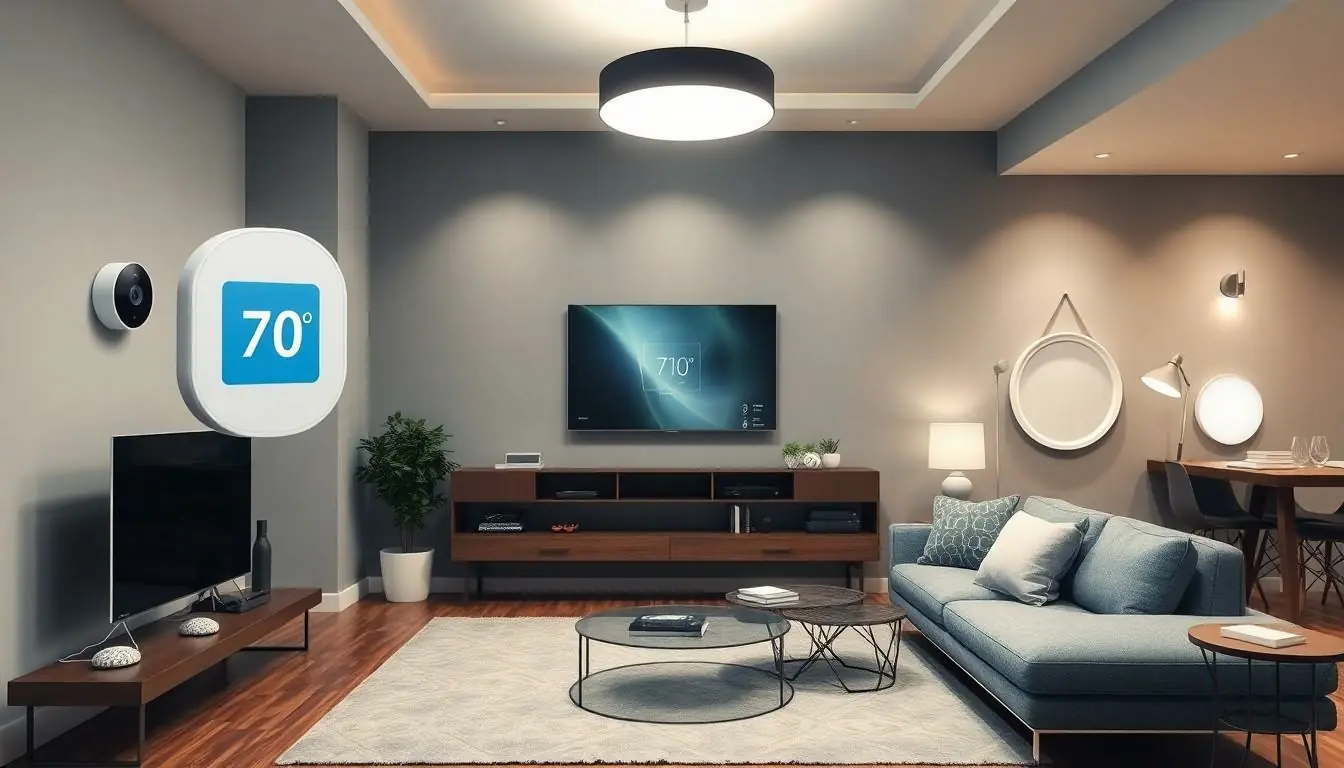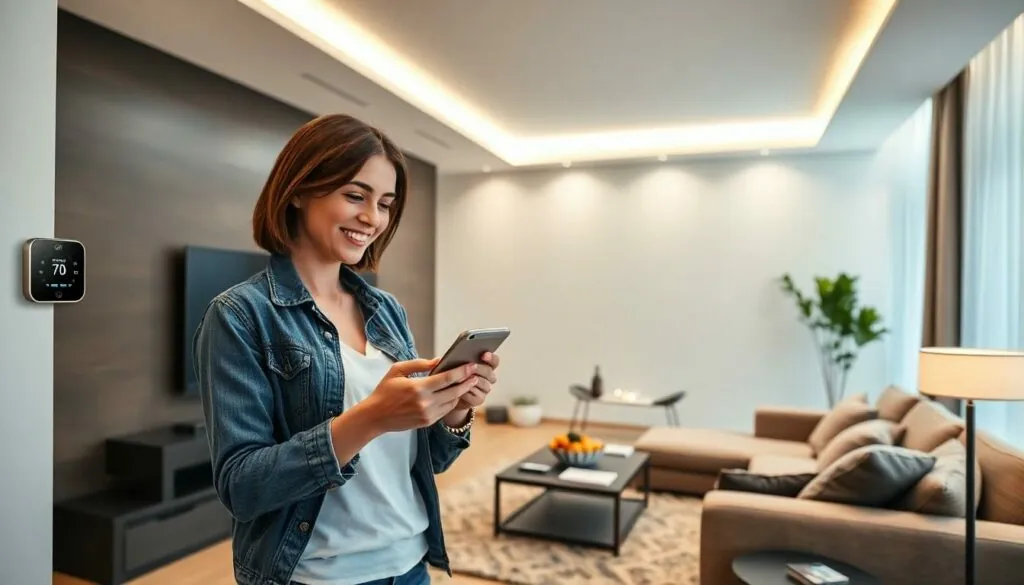Imagine a home that knows you better than your best friend. A place where your coffee brews itself just as you stumble out of bed and the lights dim as you settle in for movie night. Home automation design isn’t just about gadgets; it’s about creating a lifestyle that’s as seamless as a cat sneaking up on a sunbeam.
Table of Contents
ToggleOverview of Home Automation Design
Home automation design transforms living spaces into smart environments. This approach fosters convenience and efficiency through integrated technology.
Definition and Key Concepts
Home automation refers to the use of devices and technology to control various household functions. These functions include lighting, climate, security, and entertainment systems. Key concepts in home automation include connectivity through smart devices and centralized control systems. These systems may utilize protocols such as Wi-Fi, Zigbee, or Z-Wave. Integration enables seamless communication between devices, allowing users to manage their environment easily. A common example is a smart thermostat, which adjusts temperature settings based on user preferences and occupancy.
Importance in Modern Living
Home automation significantly improves daily living experiences. Enhanced security through smart locks and cameras ensures peace of mind. Additionally, energy efficiency reduces utility bills and minimizes environmental impact. Automation simplifies routine tasks like scheduling lights or managing appliances, saving time and effort. Increased accessibility benefits individuals with mobility challenges, promoting independence. Overall, home automation design matches contemporary lifestyles by offering adaptability and convenience.
Key Components of Home Automation Design

Home automation design integrates various elements to create a cohesive smart living environment. Two essential components are smart devices and networking infrastructure.
Smart Devices and Appliances
Smart devices enhance home automation by offering connectivity to everyday functions. Devices include smart thermostats that adjust temperature automatically, security cameras for real-time surveillance, and smart lighting that responds to voice commands. Automation can also extend to appliances such as refrigerators that monitor food inventory and ovens that allow remote cooking. Each device contributes to a seamless experience, optimizing daily life through convenience and efficiency.
Networking Infrastructure
Robust networking infrastructure forms the backbone of effective home automation systems. Wireless protocols like Wi-Fi and Zigbee facilitate communication between devices, ensuring seamless interconnectivity. A reliable router supports multiple devices without lag, centralizing control through applications on smartphones or tablets. Additionally, mesh networks improve coverage throughout the home, eliminating dead zones. The combination of strong network infrastructure and dependable smart devices guarantees optimal performance and user satisfaction.
Best Practices for Home Automation Design
Effective home automation design focuses on creating user-friendly and adaptive environments. Prioritizing specific user needs results in systems that enhance daily experiences.
User-Centered Design Principles
Focusing on user-centered design principles ensures systems are intuitive. Consider user interfaces that promote ease of use across all age groups. Inclusion of voice commands and mobile apps simplifies interaction. Testing designs with actual users reveals functionality and satisfaction. Gathering feedback helps iterate and improve systems to meet unique preferences.
Scalability and Future-Proofing
Incorporating scalability in home automation allows for easy upgrades. Utilizing technologies that support expansion facilitates adaptation to evolving needs. Investing in modular devices ensures compatibility with future systems. Anticipating advancements means staying relevant in a fast-paced tech environment. Evaluating new standards and protocols enhances long-term viability.
Challenges in Home Automation Design
Home automation design presents several challenges that can impact functionality and user experience.
Security Concerns
Security concerns rank high among the challenges in home automation design. Unauthorized access can compromise smart devices, leading to privacy violations or property theft. Cybersecurity threats, such as hacking, demand robust security measures. Regular software updates and strong encryption protocols help mitigate these risks. Awareness of potential vulnerabilities becomes crucial for users and designers. Implementing secure user authentication methods, like multi-factor authentication, enhances protection against unauthorized access.
Compatibility Issues
Compatibility issues frequently arise in home automation design, posing significant challenges. Many smart devices come from different manufacturers, leading to concerns about seamless integration. Not all devices communicate effectively, which may hinder user experience and automation efficiency. Establishing common communication protocols, such as Z-Wave and Zigbee, can alleviate compatibility issues. Users should research device compatibility early in their planning phase to streamline integration. Additionally, selecting a centralized control system ensures that various devices work harmoniously within the smart home framework.
Home automation design represents a significant leap towards creating more efficient and enjoyable living spaces. By integrating smart devices and ensuring seamless communication, it transforms everyday routines into effortless experiences. With a focus on user-centered design and adaptability, homeowners can tailor their environments to meet specific needs.
Addressing challenges like security and compatibility is crucial for a successful implementation. As technology continues to evolve, embracing scalable solutions will keep homes relevant and secure. Ultimately, investing in home automation design not only enhances convenience but also aligns with modern lifestyles, paving the way for a smarter future.





